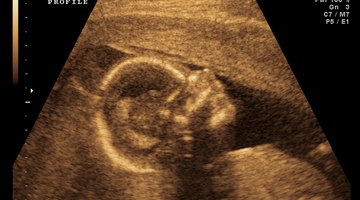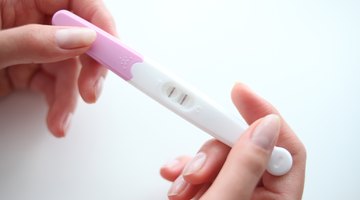When Does a Baby Develop Gender?
One of the most exciting things about having a child is learning the gender of the baby. Many people choose to find out as soon as possible, while others decide to keep it a surprise. Although you may not see sex organs on a sonogram for weeks, a baby's sex is determined long before it arrives in the world.
Gender Assigned
Gender is determined immediately upon fertilization. The 23rd pair of chromosomes establishes the sex of the baby. The mother's egg contains an X chromosome, while the father's sperm carries either another X or a Y chromosome. An XX combination means your baby is female and an XY combination means your baby is male. This means that the baby's gender is determined before it is even considered a fetus.
Development

How Early Can You Tell the Gender of a Baby?
Learn More
Though during the first few weeks of fetal development your baby's internal and external genital structures are the same, the organs will eventually change. Your baby's gonads will either become ovaries or testicles. The phallus will become either a clitoris or a penis, and the genital folds will become either labia or scrotum. This all depends whether or not testosterone is present. Testosterone will be present in embryos with a Y chromosome, and male sex organs will begin to form. If testosterone is not present, female organs will develop, making female the "default sex" for human beings.
Sex Organs Are Visible
Although your baby's gender is determined immediately upon fertilization, you will not be able to know the sex until about the 16th to 18th week of pregnancy. At around the sixth week your baby will develop a small bud called the genital tuber at the site of the genitals. This will look the same for boys and girls until around the 9th week when the sex organs begin to form. By the end of the 20th week, the external sex organs should be fully formed for both male and female babies.
Intersex Babies

What Determines the Gender of a Baby?
Learn More
According to the Intersex Society of North America (ISNA), "intersex" is a term used to describe a variety of conditions in which a person is born with a sexual anatomy that doesn't fit typical definitions of male or female. For instance, a person may be born with genitals that are in between usual male and female parts or may be born with both XX and XY chromosomes. The ISNA says to understand intersex, think of gender like the color spectrum. Sex organs vary in shape and size and sex chromosomes can vary as well. While most cultures divide people into male and female categories, this is not the way of nature. This condition is very rare but it does exist.
Gender as a Controversial Issue
The word "gender" has become quite controversial. Some say gender is biological while others say gender is purely a product of the child's environment. In other words, if you put a child in a pink room and teach him or her to play with dolls, that baby will identify as a girl. If you put a child in a blue room and teach him or her to play with trucks, he or she will identify as boy. The truth probably lies somewhere in between. Whether it is biology or the environment, KidsHealth says that by age 2 or 3, your baby will begin to develop an awareness of being either male or female and begin to act accordingly.











